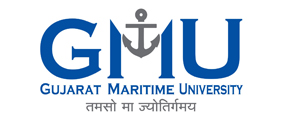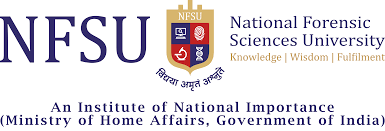
The Rule of Law by Tom Bingham (Book Review)
INTRODUCTION
Bibliographical Information
The name of the book under review is ‘Rule of Law’. It has been authored by Tom Bingham. It was published in the year 2010 by Allen lane followed by Penguin books, a world-famous publishing house of London, the United Kingdom founded by Sir Allen Lane in the year 1935. The book has been subdivided by the author into 3 parts and contains 12 chapters. The book is 213 pages long in of which 175 pages contain the main content and 38 contain notes and a detailed index, references and case citations used in various chapters of the book. Each age a maximum of 37 lines with each line going up to 13 words.
The theme of the Book
The book is based upon the legal doctrine of ‘Rule of law’ which means the exercise of power which is in accordance with law or which has a justification in law.The phrase is extensively used in modern times though it’s advent, evolution and application have not been much examined. The jurisprudence behind this doctrine is that law should rule people and it should be justified and righteous and not tyrannical or arbitrary. The book has tried to convey the message to readers and power holding authorities that power which anyone holds is granted to them by LAW itself and hence it should be exercised judiciously and in accordance with it. The book tries to emphasise on the fact that powers given by law must be exercised in accordance with the law and not in accordance with the discretion it gives to the person holding the power.
About the Author
The book ‘RULE OF LAW’ has been authored by Thomas Henry Bingham, Baron Bingham of Cornhill. He was born on 13TH October 1933 in Marylebone, London, United Kingdom. He held the positions of ‘Master of the Rolls and Records of the Chancery of England’ in the year 1992, Lord Chief Justice of England and Wales in the year 1996. He played a pioneering role in the separating the judicial wing of the House of the Lords of the Parliament and establishment of the supreme court of the UK, achieved with the Constitutional Reform Act 2005. The court began functioning after in 2009 after his retirement. He was a powerful judge who advocated the independence of the judiciary for protection of human rights. He gave judgements and pronouncements against the government in many judicial review cases. One such case is the Malaysian Pergau Dam case in 1994. He is the holder of Order of Garter, the most senior order of KNIGHTHOOD in United Kingdom’s honours system.
He died in the year 2010 in Boughrood, Powys, United Kingdom at the age of 76 years due to Lung Cancer. He won the Orwell Prize of Literature, posthumously in the year 2011 for the book ‘The Rule of Law’. He is regarded as most eminent jurists after world war 2 and one of the most experienced, talented and eminent jurists of his time.
SUMMARY
PART-I
Part 1 of the book consists of 2 chapters. These 2 chapters are-
• The Importance of the Rule of Law and
• Some History
The author begins his journey of analysis of the Doctrine by giving credit to the Vinerian Professor – A.V.DICEY of Oxford University for coining the term ‘Rule of Law’ and giving its 1st definition. He also observes that many authors track Rule of law back to Aristotle however, it was Dicey who formulated a formal definition of rule of law. Furthermore, he elaborates in this chapter the importance of the doctrine in the application of law and power through the eyes of various authors like Dr Thomas Fueller who made the statement- “Be you never so high, the law is above you”. Then he has also talked about the spread of the English expression of Rule of law to various nations like South Africa. He gives the message that the concept of the use of the law is not just an English phrase and concept but an internationally accepted doctrine as constitutions of French, Germany and South Africa. In Germany, it is known as ‘Rechtshaid’ and in France, it is known as ‘État de droit’ which when translated mean ‘law-governed state’. He concludes the chapter by giving references to Oliver Twist and Shakespeare’s Henry VI Part II depicting literary humour towards lawyers and law.
The second chapter contains the evolution of the rule of law. In this chapter,the author traces origin, evolution and development of the concept. The author has divided the chapter into-
• Magna Carta 1215 (pg no. 10-13)- This part elaborates upon the charter of Magna Carta often called the Great Charter, which has several provisions emphasising on rule of law.
• Habeas Corpus: The Challenge to unlawful detention (pg no. 13-14)- In this part, the author deliberates and talks about his study on the old writ of Habeus Corpus and its relation to human rights.
• The abolition of torture (pg no. 14-17)- This part envisages the importance of jury trial and abolition of torture and unusual punishment to convicts or accused. He also states that Russia abolished torture in 1801 and USA in 1791.
• The Petition of Rights, 1628 (pg no. 17-19) – The author has considered this as the successor of Magna Carta and Writ of Habeus Corpus.
• Sir Matthew Henry Hale’s resolutions (pg no. 20).–The author has talked about the rules of conduct devised by Sir Mathew hale who was chief justice of king’s bench from 1671 to 1676. These are a set of 18 rules which comprise and devise conduct of legal ethics. Of these 18 points, I would like to quote point 4. For stating how it depicts Rule of law.
“4. That in the execution of justice, I carefully lay aside my passions, and not give way to them however provoked.”
The author then analyses various laws like Bill of Rights, 1689, The French Declaration of Rights of Man and Citizen, 1789 etc. and thus conclude this part. So, Part 1 of the book contains history and evolution of the doctrine.
PART-II
Part 2 of the book comprises of 8 chapters. This is the longest part of the book. These Chapters are namely-
• The Accessibility of the Law,
• Law not discretion.
• Equality before Law,
• The Exercise of Power,
• Human Rights,
• Dispute Resolution,
• A Fair Trial,
• The Rule of Law in the International Legal Order.
This chapter is the heart and soul of the book. The previous part dealt with authors research, reading and history of the doctrine of rule of law. However, in this part of the book, the author has elaborated upon his experience, the contemporary development and the essentials aspects associated with the rule of law.
The author begins with the importance of access to judicial remedy to everyone. The author is a believer that to establish the rule of law and exercise of power everyone must have access to the law first. The author has given two interpretations of this. First is, given by Chief Justice of Australia who stated that ‘The content of law must be available to the public’. And the second interpretation is the access of law and legal remedy of society. He has also talked about statute-based law known as legislations and judge-based law called precedents. The author continues with his conquest of exploration of doctrine and begins the 4th Chapter with the statement- “Questions of legal right and liability should ordinarily be resolved by application of the law and not the exercise of discretion”. In this chapter, he gives examples of lord Hewart, lord shaw of Dunfermline and elaborates on the fact that law should be followed and disputes must be resolved in accordance with the law and not by the discretionary powers assigned to the people exercising law. The author moves to 5th Chapter based on Equality before law. This is another doctrine which states that law must be equal for everyone and everyone should follow law equally. This is another important aspect of the rule of law. He begins the chapter with reference of St. Paul in 1st century AD who said- “There is neither Jew nor Greek, there is neither bond nor free, there is neither male nor female: for ye is all one in Christ Jesus.”The author further gives examples of USA, UK and French system and how equality before the law is practised there. Chapter 6 of the book is titled ‘Exercise of power’. This chapter contains one of the most important topics of the book. The concept of rule of law can only be tested when an exercise of power takes place. He talks about the modern concept of judicial review which brings compliance among public authorities. He refers to Lord Hailsham’s lecture of 1983 in which Lord Hailsham says that ‘Be you never so high, the law is above you’ applies to judges and mister equally and to everyone who exercises power. Chapter 7 is based on the link between Human rights. It analyses the importance and ethos of various international conventions like Universal Declaration of Human Rights, European Court of Human Rights’ ‘the notion of the rule of law’, European Convention of 1950 etc. The chapter is focussed on Right to life, Freedom of thought and religion, protection of property etc. Chapter 8 of the book is based on Dispute resolution it is related to how law can be made accessible to all through relief in court fees and pro-Bono’s for finding way outs and making dispute resolution in the sub-utopian society easy. Furthermore, the author talks about the time taken by judiciary to resolve disputes in due time as well. The 9th chapter of the book based in Fair trial and he states that the process of adjudication must be fair. He further said that fairness is to be exercised on both sides and not just one side. Furthermore, the author talks about the independence of judges from government and ministers. The author has divided the chapter into criminal trials and civil actions and focussed on them separately. Lord Bingham marks the end of Part II with Chapter 10 titled ‘The Rule of Law in the International Legal Order.’ This chapter talks about the fact that the rule of law must be followed at both national and international levels. The author has given examples of wars and cases of the International Court of Justice’s cases and the Suez Crisis of 1956.Thus, concludes Part II of the book.
PART-III
The part III of the book contains 2 chapters namely-
• Terrorism and the Rule of Law,
• The Rule of Law and the Sovereignty of Parliament.
The author has taken a very good topic with terrorism and its relation to the rule of law. This is because it is difficult to imbibe the ideologies of terrorism along with the concept of rule of law. The author has pointed out issues of pertinence regarding the same. He further talks about the war waged by Britain and the United States of America against Al-Qaeda (pg 137). Furthermore, the author has stated that nations must tackle terrorism but the show and equal dedication when waging war against AIDS, poverty etc. H appreciates Britain’s move and tactics to counter-terrorism. He quotes Professor David Cole of Georgetown University who said- “The brits do it better”. H talks about the wings of the state such as the executive, judiciary and the anti-terror legislation and compares and contrasts with rule of law. He gives special focus to the War of Iraq. The final chapter of the book contains details of the concept of rule of law and its link to the sovereignty of the parliament. This chapter deals with how parliaments and legislatures must make laws in accordance to rule of law, human rights and not exercise powers arbitrarily. Thus, concludes Tom Bingham’s Rule of law.
EVALUATION AND CONCLUSION
The book ‘Rule of Law’ is authored by Tom Bingham who was one of the most eminent jurists and judge in the United Kingdom. The book has emphasised and explained the history, evolution, development and current scenario of the doctrine and its application in the contemporary world. The author has been successful in writing a ‘complete’ piece of work. By complete I mean- The author has written a piece which comprises all the aspects of one should cover about a topic. The author has taken the readers from Magna Carta of 1215 and the entire history of Rule of Law. The author made it clear that Rule of law is in existence since early times of Magna Carta and the ancient writ of Habeus Corpus, however, credits A.V. Dicey with coining and defining the term for the first time. He goes on in Part II which is the heart and soul of the book as the author has dissected and broken down the concept and doctrine into its constituent parts which include access to law, free and fair trial, equality before law etc. Part III of the book deals with the rule of law and its pertinence to terrorism and war against it.
I opine that the author has used simple language and vocabulary to express himself. The text is simple and plain without any hint of comedy or sarcasm. It is a mixture of narrative at times and analysis at others. His thoughts and points are clear. His opinions are well structured and justified by legal arguments. The book displays that author has read extensively in law and about this concept specifically. However, the book has technical and legal jargons as well which may confuse readers who are not from this profession. In the preface,the author states that this book is not for lawyers but everyone interested in the concept of rule of law. However, his work on this concept and his writing can be overwhelming for people who are not of legal background. The book is very good for law students and jurists as it has explained the concept very well. Law professionals, judges and jurists would enjoy reading his work on the Rule of Law.












